Mounting Systems
Choosing a mounting system is much simpler than picking an inverter as it is often based on your roof type. Each category has many options, with aesthetics and robustness being the main differentiating factors. Here we will briefly explain how each mounting system works so that you know what to expect.
The wide variety of roof types requires a wide variety of mounting systems.
There are 4 categories of mounting systems
On-Roof Systems


The most common
and cost-effective solution.
In-Roof Systems


Offer a better aesthetic and
sleeker finish but come with a higher cost


Flat Roof Systems
Allowing you to take advantage of large flat roofs commonly found on warehouses and other larger buildings


For small systems, this can be the same as a flat-roof system.
Ground Mount Systems
These are the most common mounting systems and can be used on concrete and slate tiles, various metal roofs and every other type of angled roof.
It’s often the cheapest option and provides performance benefits through ventilation around the back of the panels. This gap behind the panels can cause problems with birds nesting in the space and damaging the panels, a problem easily fixed with bird mesh netting.
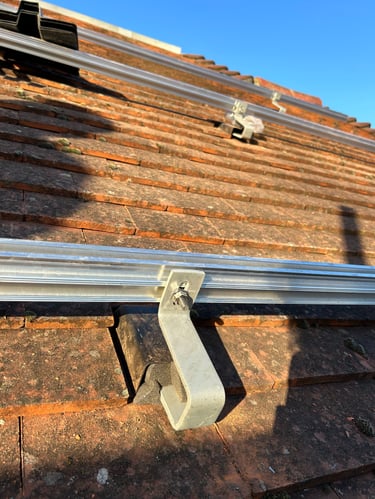

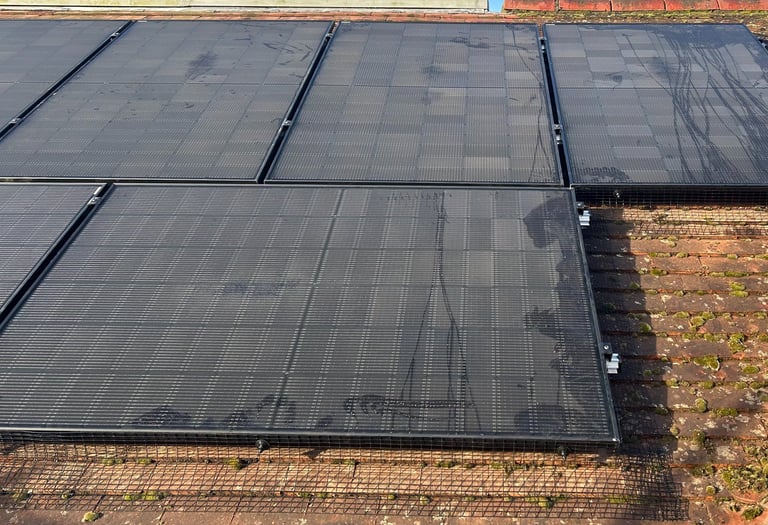

Once the panels are mapped onto the roof, a select few tiles are removed from above the roof rafters.
Roof anchors or hooks are mounted to the roof rafters and the tiles are placed back on top.
A metal frame or rail is attached across the roof hooks.
The panels are fitted to the frame.
On-Roof Mounting Systems


Here is how the panels are mounted to the roof:
In-roof systems use the same panels as on-roof systems. The only difference is that the panels are mounted directly to the roof battens/rafters and not above the tiles. This is usually achieved with a plastic tray between the panels and rafters. The roofer will then tile around the panels and use flashing to restore a watertight seal.
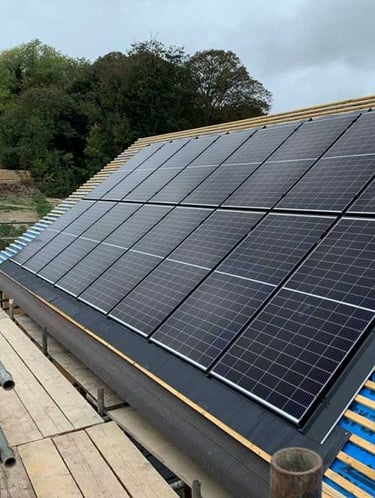

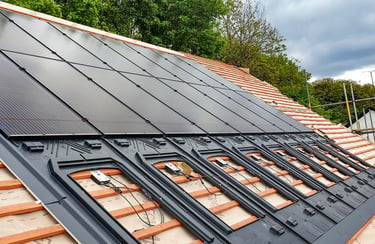

However, this system is well worth considering when building a new roof where you can save on roof materials and offer a sleek and streamlined appearance. The best time to install solar panels is when you are replacing your roof tiles as you can also save on scaffolding costs.
In-Roof Mounting Systems


In-roof systems have a few drawbacks that make them less popular for installation on existing roofs:
They cost more time and money (10-15% more) to install as tiles need to be removed under the panels and then carefully installed around the panels. Typically adding a day to the work.
The lack of an air gap behind the panels' means that ventilation is reduced. This can potentially cost the system about 3% in performance.
To create the watertight seal between the panels and the surrounding tiles a flashing is needed. This takes up extra space, sometimes meaning that fewer panels can be fit on a roof.
Flat roof systems have the benefit that they can be orientated in whichever direction you want allowing for optimum positioning.
Since flat roofs aren't common in UK homes these systems are mainly used for commercial applications.
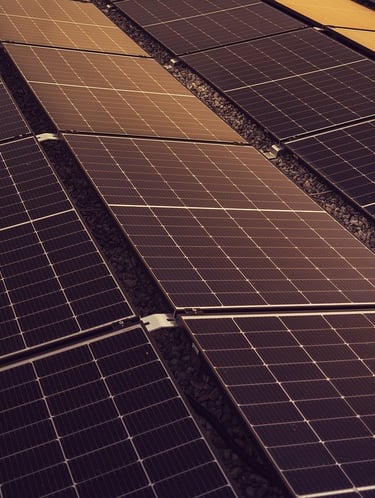


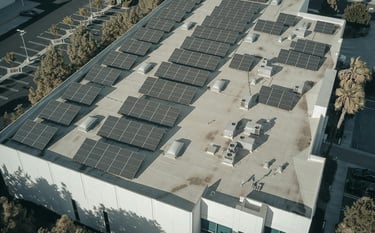
Firstly, due to the space needed between rows of panels, they take up more space per kW compared to pitched roof systems. In addition, flat roof systems typically sit at around 20 degrees. Since the optimum inclination for solar panels in the UK is around 35-40 degrees, this results in less total production from these systems.
Secondly, flat roof systems aren’t typically secured to the roof and instead use ballast systems to weigh down the mounting frame. Therefore, more consideration has to be taken to ensure the roof structure can support this additional weight. However, if the system is secured to the roof, it can compromise its warranty or watertightness.
Finally, these systems do tend to cost around 5-10% more.
Flat Roof Mounting Systems
Unfortunately, flat roof systems come with some downsides...
These systems often consist of raised metal frames secured with either concrete bases or piles driven into the ground.


Ground mount systems are often installed where space isn't limited, this allows for more advanced systems to be used. This includes various tracking systems that allow the optimum inclination to be maintained throughout the day and seasons as the sun's height changes.
The raised position of these systems provides space for agricultural grazing and leaves wildlife undisturbed.

